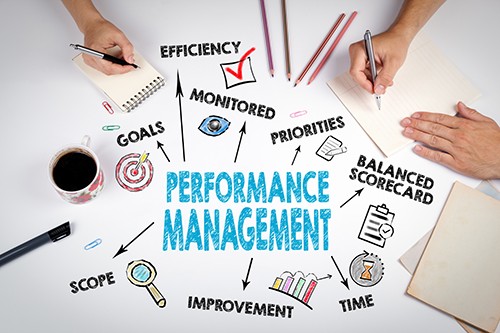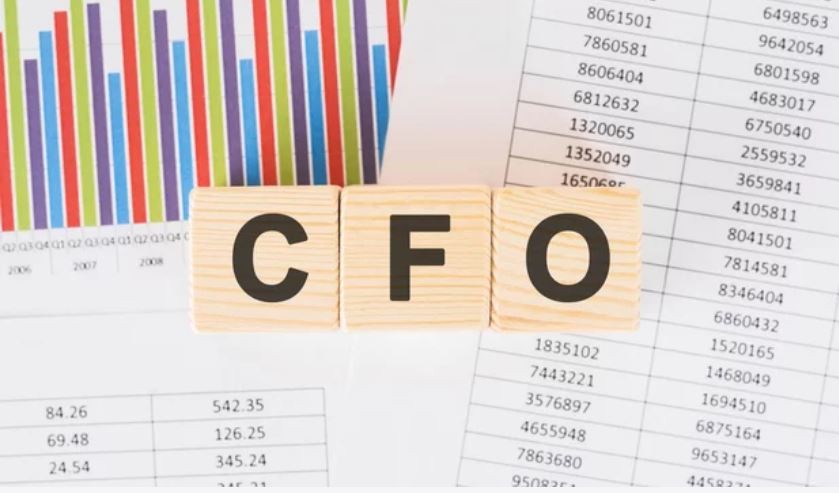Planning for a Pandemic
There is an old saying, ‘The most fertile source of insight is hindsight’. That being the case, what can business owners learn from the COVID-19 pandemic?
American business magnate, investor, and philanthropist, Warren Buffet said, “Only when the tide goes out do you discover who’s been swimming naked.” In boom times, flawed business models and poor business practices go unnoticed but when the tide turns these issues surface. The pandemic arrived with very little warning, but a lot of businesses have perished and there is more to come as the income support, rent deferrals and loan repayment lifelines all expire shortly.

The pandemic changed the way we live, work and play. Apart from being a massive health and humanitarian crisis, the pandemic sent hundreds of thousands of businesses into hibernation and in the process, created some incredible challenges. The economy shut down, supply chains were interrupted, and we witnessed panic buying. As businesses emerge and start to adapt to the new ‘normal’, some of the temporary habits developed during the survival phase have become a permanent part of the landscape. Social distancing and staff working remotely have become mainstream and virtual meetings have replaced face to face meetings. Consumers have embraced online shopping and research out of the US suggests that more than half (58%) of the population don’t plan to go back to using cash after the pandemic ends, choosing instead to transition to a cash-free lifestyle.
Revival Phase
Business owners were Initially in ‘survival’ mode and the Government support certainly saved many businesses. The Federal Treasurer Josh Frydenberg admitted that some businesses won’t survive the COVID-19 pandemic. He said, “There will be businesses that will fold, there is no doubt about that, and we can’t save every business and we can’t save every job.” Obviously, some small business sectors are in a particularly precarious position including those in travel, hospitality, and event management.
 In February, Victorians were put into a five day ‘circuit breaker’ lockdown
with stage four restrictions in place across the entire state. Business owners were given just 12 hours’ notice of the lockdown that
coincided with peak season for florists and restaurants, given it was on the eve of Valentine’s Day and Lunar New Year celebrations. It was
a financial disaster for these types of businesses who were fully stocked or had ordered supplies that couldn’t be cancelled. The fact is,
there could be more pandemics, and this certainly won’t be the only economic recession business owners have to deal with in this country.
As such, every business needs to have a contingency plan.
In February, Victorians were put into a five day ‘circuit breaker’ lockdown
with stage four restrictions in place across the entire state. Business owners were given just 12 hours’ notice of the lockdown that
coincided with peak season for florists and restaurants, given it was on the eve of Valentine’s Day and Lunar New Year celebrations. It was
a financial disaster for these types of businesses who were fully stocked or had ordered supplies that couldn’t be cancelled. The fact is,
there could be more pandemics, and this certainly won’t be the only economic recession business owners have to deal with in this country.
As such, every business needs to have a contingency plan.
As the Government rolls out the vaccine, we have moved into the ‘revival’ phase that requires business owners to think through the strategies to operate in the new environment. Consumer behaviour has changed, and the digital domination requires business owners to invest even more resources in their online presence.
Your Digital Presence
 With
retail stores closed and people in lockdown, COVID-19 forced a massive shift in consumer behaviour to online shopping. We always suspected
this shift was going to happen, however, the pandemic accelerated the move. According to Australia Post’s 2020 eCommerce Industry
Report, in April 2020, 5.2 million Australians shopped online, and the Australian Bureau of Statistics estimates those sales were worth
$2.7 billion which is around 11.1% of all physical retail sales. This is a 56% increase compared to the 7.1% of retail sales back in March
2019.
With
retail stores closed and people in lockdown, COVID-19 forced a massive shift in consumer behaviour to online shopping. We always suspected
this shift was going to happen, however, the pandemic accelerated the move. According to Australia Post’s 2020 eCommerce Industry
Report, in April 2020, 5.2 million Australians shopped online, and the Australian Bureau of Statistics estimates those sales were worth
$2.7 billion which is around 11.1% of all physical retail sales. This is a 56% increase compared to the 7.1% of retail sales back in March
2019.
Even as social-distancing rules ease, this trend will continue to rise. Many brick-and-mortar shops are at risk with reduced foot traffic as consumers enjoy the ease and convenience of online shopping. This massive shift to online sales will be one of the many legacies of COVID-19 and while the driving force behind the growth of online sales was necessity not consumer preference, the consumer ‘tribe’ have spoken and buying online is the new ‘normal’. Businesses who aren’t geared up for this change in consumer behaviour will pay the price.
Most businesses have some sort of digital presence with a website, however, their online sales are still only a small percentage of their total sales. The good news is, the internet is a level playing field so small business can compete with big business. In fact, some big businesses may become casualties of the pandemic which will open up opportunities to increase your market share. To capitalise, you need to be marketing right now and the focus needs to be on your digital presence.
In the last decade, the internet and social media have rewritten almost everything we knew about sales and marketing so right now is the
perfect time to update your website and ramp up your social media activity. What channels work best in your industry? What are your
competitors doing in that space? If we slip back into another lockdown don't sit idle, get online and do some serious research. Monitor what
your competitors are doing and remember, your website will never be ‘finished’ it will always be a work in progress.
Your Website - Build it and They will Come...
In today’s internet fuelled world, your website is the heart of your marketing. It is usually the first touch point with a prospective new customer and during the self-isolation period, people were glued to their phones, computers, and iPads. With the pandemic-driven seismic shift to online sales there’s never been a more important time to have a website that sells your products or services.
Of course, there are websites that work, that is, they deliver new business every day of the week. On the other hand, there are non-performing websites that are best described as ‘electronic brochures’. These websites simply list the who, what and where of the business and they don’t generate leads or sales. Unfortunately, we often find business owners who have spent a bucketload of money to build a ‘pretty’ website that looks good but contains very little relevant content. Without original content that is relevant and interesting to your ideal type of customer you are really relying on hope to attract prospects. By contrast, producing and promoting content that targets a specific type of customer is a strategy that works.

Your website must spell out the benefits you offer prospective customers not just the features of your product or services. Focus on educating your audience and provide value. Let your content do the talking and demonstrate your expertise so visitors want to reach out and want to contact you. Obviously not everyone is ready to buy, so entice visitors to take action and as a minimum, subscribe to your mailing list.
Visitors to your website will pass judgment on your business in seconds and if your website is old and tired or doesn’t deliver a positive customer experience it’s time for a makeover or a new website. Take a step back and assess your current website – is it delivering new customers, clients, or patients? Is it easy to navigate? Does it differentiate you from your competitors? Does it provide everything your customers need including e-commerce facilities? Does it resonate with your ideal type of customer and is it memorable? Does it look modern, fresh, and appealing?
Compare your site with your competitors. What features on their sites give them the edge over your site? Are you missing calls to action, videos, a live chat feature, lead magnets, an online booking facility or an e-commerce store? Make sure your brand and the images on your website appeal to your target demographic.
 Sadly,
many business owners don’t understand the importance of SEO (search engine optimisation). Kevin Costner famously said, “Build it and they
will come” in the classic 1989 U.S. film, “Field of Dreams”. Unfortunately, this theory doesn’t apply to websites. To appear on page one of
a search on Google is a science and it does not happen without a lot of things in place. In fact, if you aren’t showing up on page 1 of a
Google search, your website pages, blog, articles, and videos are almost invisible because ninety percent of people don’t go past the
results on page one when doing a Google search. The top 3 positions on Google account for over 60 percent of all clicks on page 1 (Position
1 = 33%, Position 2 = 18%, Position 3 = 12%) so spend some time every week to monitor your keyword rankings and try different tactics to
move up the rankings. It can be a slow process but as long as you are moving up the page rankings, you are making progress. Focus on key
words and phrases in your industry and tailor your content to the needs of your ideal customer and niche markets.
Sadly,
many business owners don’t understand the importance of SEO (search engine optimisation). Kevin Costner famously said, “Build it and they
will come” in the classic 1989 U.S. film, “Field of Dreams”. Unfortunately, this theory doesn’t apply to websites. To appear on page one of
a search on Google is a science and it does not happen without a lot of things in place. In fact, if you aren’t showing up on page 1 of a
Google search, your website pages, blog, articles, and videos are almost invisible because ninety percent of people don’t go past the
results on page one when doing a Google search. The top 3 positions on Google account for over 60 percent of all clicks on page 1 (Position
1 = 33%, Position 2 = 18%, Position 3 = 12%) so spend some time every week to monitor your keyword rankings and try different tactics to
move up the rankings. It can be a slow process but as long as you are moving up the page rankings, you are making progress. Focus on key
words and phrases in your industry and tailor your content to the needs of your ideal customer and niche markets.
While this certainly creates an opportunity, do not get complacent because your competitors are probably putting their underperforming
website under the magnifying glass as well. Online sales are the future and make sure your online presence delivers an innovative customer
experience.
This article forms part of our Business Accelerator Magazine. Download the latest edition HERE or browse other articles from this edition below:
- Here’s What Business Owners Need to Know About Australia’s Rollout of the Coronavirus Vaccine
- What Drives Your Business Growth and Profits?
- Recession Buster Edition #4 - Grow Your Business by Improving Your Systems & Processes
- Victoria's Circuit Breaker Action Business Support Package
- Return to Top
Disclaimer: This newsletter contains general information only. No responsibility can be accepted for errors, omissions or possible misleading statements. No responsibility can be accepted for any action taken as a result of any information contained in these articles. It is not designed to be a substitute for professional advice and does not take into account your personal circumstances.










